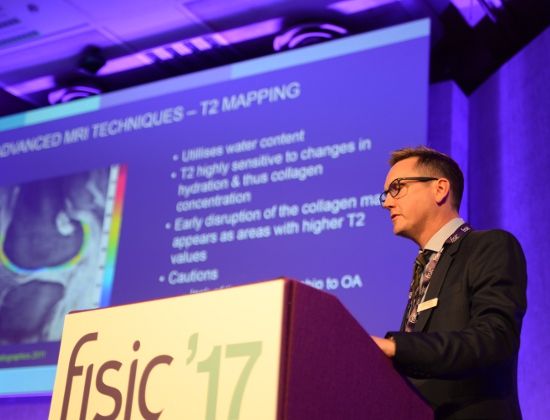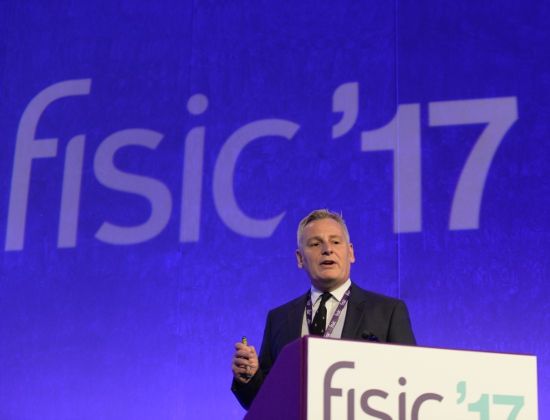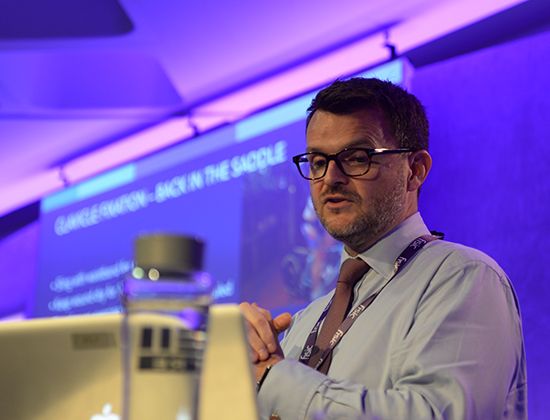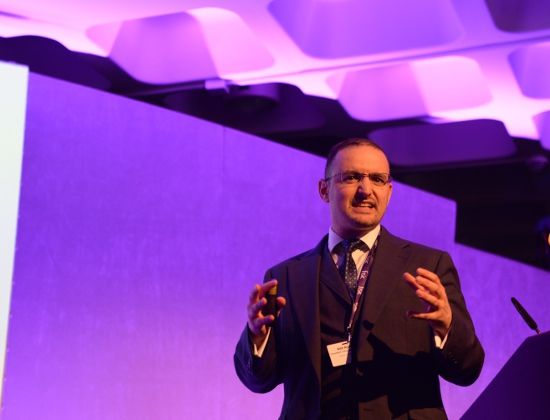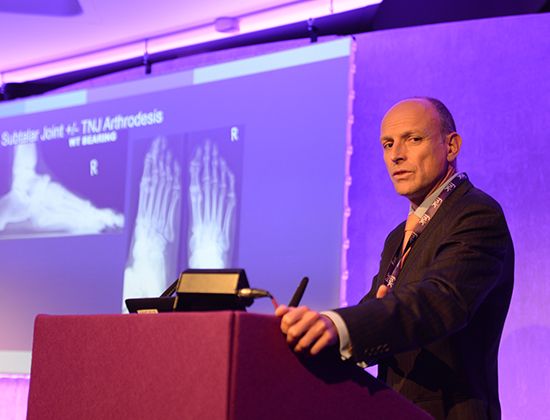The Pelvis and Groin
This session included presentations on: Peri-symphyseal anatomy; differences between males and females; Imaging groin pain (including radiology of the LPAC); Clinical examination of groin pain and DOHA consensus; Surgical treatment of inguinal disruption; Rehabilitating the patient with chronic medial groin pain; Management of rectus femoris injuries; and Adductor injuries – acute adductor avulsions.
Regarding peri-symphyseal anatomy, it is important to think in layers. The anterior pubic ligament crosses over the in front of the symphysis. The pyramidalis muscle attaches to it proximally, and the adductor longus attaches distally. The rectus abdominis is not in continuation with the adductor longus as was once thought. The main difference between male and female anatomy is that in males the rectus abdominis internal tendon runs over the front of the symphysis all the way down to connect with the gracilis and fascialata; whereas in females it stops in front of the symphysis. Imaging of groin pain requires careful review of the MRI and careful clinical analysis, which should follow a structured system of examination as multiple pathology may exist. Imaging should support the clinical diagnosis and it is important to rule out any involvement of the hip. Diagnosis of f inguinal disruption (also known as sportsman’s groin as there is often no evidence of a disruption) is by clinical examination, and static and dynamic ultrasound. Surgical repair should be minimal with no cutting of the ligament. In rehabilitating chronic groin pain, there are a number of issues to understand including the anatomy of the hip joint and its function in gait, the influence of the hip on the groin during running and kicking movements as well as the interplay of the adductor versus the abdominal muscles. The benefit of different exercises should be appreciated and a clear end-point should be set for strength, recruitment and patterning. Rectus femoris injury in athletes has a multifactorial aetiology but occurs mainly during sprinting and kicking. Restoration of the anatomy by surgical reinsertion of the avulsed tendon provides successful outcomes with a personalised RTP (GPS is very useful for this) and recovery time is at least 12 weeks. Recovery after surgery for adductor avulsions depends on the procedure: RTP of around 8 weeks for selective partial release, and RTP of around 13 weeks for reattachment of the adductor longus/pyramidalis complex.
